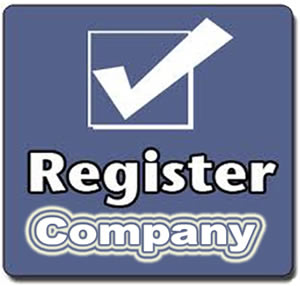How to Register a Company in India
Summary: A lot of people dream of leaving their boring desk job and starting their own business, to be their own boss, to do what they really love. However, it is not as simple as resigning your job and just starting your own firm the next day. Registering a company is a complicated process; a process made even more complicated by the fact that the process may differ depending on the type of business or the type of company that needs to be registered.
 A lot of people dream of leaving their boring desk job and starting their own business, to be their own boss, to do what they really love. However, it is not as simple as resigning your job and just starting your own firm the next day. A lot of planning and hard work goes into a startup and even then one has to ensure that in addition to everything else, the company meets all the legal and bureaucratic requirements, which at times can be more problematic and hectic than actually running the business.
A lot of people dream of leaving their boring desk job and starting their own business, to be their own boss, to do what they really love. However, it is not as simple as resigning your job and just starting your own firm the next day. A lot of planning and hard work goes into a startup and even then one has to ensure that in addition to everything else, the company meets all the legal and bureaucratic requirements, which at times can be more problematic and hectic than actually running the business.
One of the first things that should be highlighted is that fact that it is easier to register a company in India if the business and its owners are of Indian origin. This does not mean that citizens of other countries cannot open a business in India; it just means that they will have to go through more paperwork and bureaucratic hurdles than Indian citizens. However, NRIs and Foreign Nationals can only invest in or start a Private Limited Company or a Limited Company; they cannot start a Proprietorship, Partnership, or One Person Company in India. They may choose to invest in a Limited Liability Partnership (LLP), though that will require prior approval from the Reserve Bank of India (RBI). Still, all that extra work may be worth it as India is a really fast developing market.
The other thing that should be noted is that registering a company is a complicated process; a process made even more complicated by the fact that the process may differ depending on the type of business or the type of company that needs to be registered, i.e. Limited, Private Limited, Incorporated, etc. The process of registering for the same type of company doing the same business may even differ from state to state.
While, the details may vary a bit depending on the type of company or business, or even region, the core process remains more or less the same. It involves four significant steps: Acquiring Digital Signature Certificate (DSC), Acquiring Director Identification Number (DIN), Filing an eForm or New user registration, and Incorporate the company. Sounds simple enough, but in reality there is a lot of paperwork and red tape involved.
Due to this, there are many companies that offer to handle the entire process from the prospective company, for a price of course. The benefit of this is that the person or the company does not personally have to run around and deal with forms and paperwork, the agency will handle everything. They will also guide the new prospective company about the necessary steps to be taken and what should be done, so that nothing important is left.
The other alternate route is to do it themselves. The first thing anybody should do is to know what type of company they want to register as, as listed above, there are many different types, such as One Person Company, Limited, Private Limited, Incorporated, etc. All of these fall under two different categories: Public and Private. A public company has shares that it sells to the public via the stock exchange, whereas the private company is owned privately by its owners.
 However, one cannot just register as any company they want; they also have to ensure that their company meets all the requirements of registering as that company. This includes guidelines on the type of business, number of board members, number of directors, turnover, number of employees, etc.
However, one cannot just register as any company they want; they also have to ensure that their company meets all the requirements of registering as that company. This includes guidelines on the type of business, number of board members, number of directors, turnover, number of employees, etc.
This may sound obvious, but the next step is to select a name. This may sound simple enough, however, the selected name should not be copyrighted or in use by another company, for any purpose. These technicalities may make it difficult to select a name as one has to check the registrar of companies to ensure that the selected name is appropriate and can be used for the new company.
After all of this the actual process of registering the company starts. It incorporates the four steps as already mentioned above:
1. Acquire Director Identification Number (DIN)
The DIN is exactly what it say, an identification number for the director. A person required a DIN in order to be listed as a director of a firm, even his own. Without the DIN, the person will not be allowed to run his own company.
In order to get the DIN, one has to file the eForm DIN-1. The DIN-1 form is available on Official site of the Ministry of Corporate Affairs (MCA). One needs to first register on the official website, fill the form, upload it, and wait for the reply. Once the DIN is generated, one has to intimate their company, which can be done via the DIN-2 Form.
The company needs to acknowledge this and then intimate the Registrar of Corporates (ROC) regarding the DIN of all their directors. This can be done via DIN-3 Form. The DIN-4 Form can be used in case changes or updated, such as change of address or other personal detail need to be made.
2. Acquire Digital Signature Certificate (DSC)
The second step is to acquire the DSC, which is required by Information Act of 2000. This ensures the safety and authenticity of documents that are filed electronically, by demanding valid digital signature on the said documents. The DSC can only be acquired by agencies that are appointed by the Controller of Certification Agencies (CCA). Hence, one can apply to these government listed agencies: TCS, IDBRT, MTNL, SAFESCRYPT, NIC, nCODE Solutions, etc.
However, if one already has a DSC, they need not apply again and can instead use the same one, just ensure that it is still valid as a DSC usually has a validity of one or two years, after which they need to be renewed. Also note that it is illegal to use a DSC registered to someone else or acquired from a non-government listed agency.
3. New user registration and Memorandum of Association (MOA) and Articles of Association (AOA)
In order to apply for registering the company, one needs to submit an e-form on the MCA Portal. To do this, one needs to have a registered account on the MCA Portal. If one does not have the account, then this would be the ideal time to create the account. The account is free to create.
This would also be the time to create the other documents required to register the company, such as the Memorandum of Association (MOA) and Articles of Association (AOA). The MOA is a document that contains all the data required for the incorporation of the company, such as the scope of the company, as well as its powers and limitations. The MOA is part of the AOA, which contains all the rules and regulations that governs the company. Both of these documents must be registered at the time of the company incorporation.
4. Apply for company registration
This is the final and most important step for company registration, which is to actually submit all documents and apply for company incorporation. This step includes incorporating the company name, registering the office address or notice of situation of office, as well as notice for appointment of company directors, manager and secretary. It also deals with share qualifications.
In order to get the company registered, the following documents are needed:
-
Form-1A: Application form for availability or change of a company name. Here one must submit the name they have selected; the MCA will then suggest four variations of the name, of which one must be selected.
-
Form-1: This is for application or declaration for incorporation of a company, including the name selected above.
-
Form-18: Notice of the situation of a new company office or change of situation of previously registered office.
-
Form-32: Notice for appointment or change of new Directors, Managers, Secretary, and Company Head.
 Once these forms are submitted and approved, one will receive a confirmation from the MCA. All one has to do is now just wait for the final approval, which should be easily given unless there are some discrepancies in the paperwork.
Once these forms are submitted and approved, one will receive a confirmation from the MCA. All one has to do is now just wait for the final approval, which should be easily given unless there are some discrepancies in the paperwork.
While these are the four steps to get the company registered, and the company is now registered, yet it still cannot do business. In order to be business ready, the company still needs to get a PAN number, which is used for income tax purposes; and a TAN number, which allows the company to deduct taxes at source. The company also needs a current bank account from which to do business from. Additionally, the company also needs share certificates, as well as legal contracts drawn up.
Depending on the type of business, the company may also require additional certificates to actually do business. For example: Shop certificate if a shop, Registration documents of import/ export code for foreign trade, Registration documents of Software Technologies Parks of India (STPI) if a software company, etc.
Reference: Indiafilings, IndianWeb2, TechPrevue, KPS Consultants Image Courtesy: whitedust.net, ipleaders.in, trak.in









Comments
http://technoge...
Sun, 09/03/2017 - 18:54
Add new comment